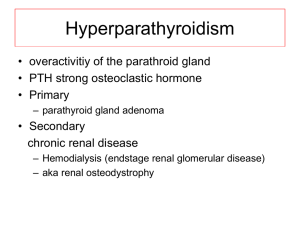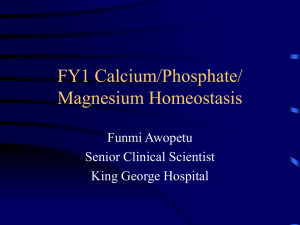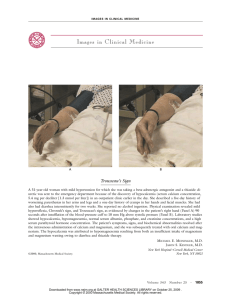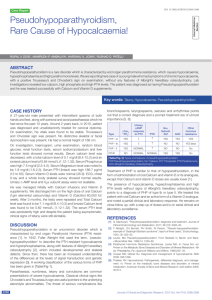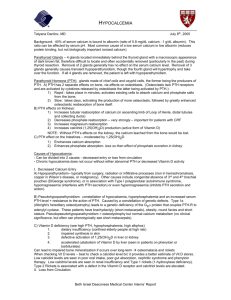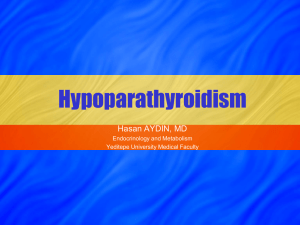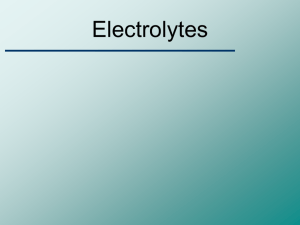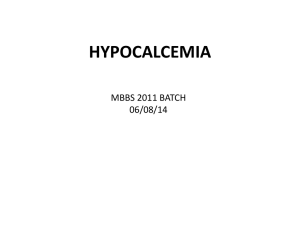Dem Hungry Bones - UCSF | Department of Medicine
advertisement
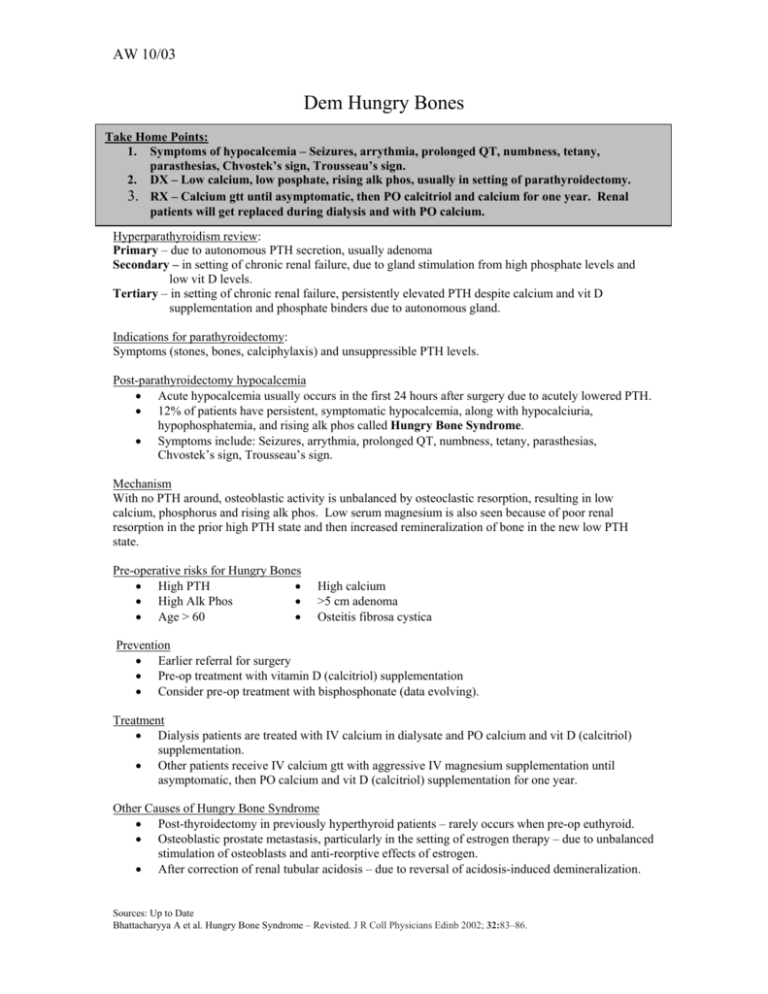
AW 10/03 Dem Hungry Bones Take Home Points: 1. Symptoms of hypocalcemia – Seizures, arrythmia, prolonged QT, numbness, tetany, parasthesias, Chvostek’s sign, Trousseau’s sign. 2. DX – Low calcium, low posphate, rising alk phos, usually in setting of parathyroidectomy. 3. RX – Calcium gtt until asymptomatic, then PO calcitriol and calcium for one year. Renal patients will get replaced during dialysis and with PO calcium. Hyperparathyroidism review: Primary – due to autonomous PTH secretion, usually adenoma Secondary – in setting of chronic renal failure, due to gland stimulation from high phosphate levels and low vit D levels. Tertiary – in setting of chronic renal failure, persistently elevated PTH despite calcium and vit D supplementation and phosphate binders due to autonomous gland. Indications for parathyroidectomy: Symptoms (stones, bones, calciphylaxis) and unsuppressible PTH levels. Post-parathyroidectomy hypocalcemia • Acute hypocalcemia usually occurs in the first 24 hours after surgery due to acutely lowered PTH. • 12% of patients have persistent, symptomatic hypocalcemia, along with hypocalciuria, hypophosphatemia, and rising alk phos called Hungry Bone Syndrome. • Symptoms include: Seizures, arrythmia, prolonged QT, numbness, tetany, parasthesias, Chvostek’s sign, Trousseau’s sign. Mechanism With no PTH around, osteoblastic activity is unbalanced by osteoclastic resorption, resulting in low calcium, phosphorus and rising alk phos. Low serum magnesium is also seen because of poor renal resorption in the prior high PTH state and then increased remineralization of bone in the new low PTH state. Pre-operative risks for Hungry Bones • High PTH • • High Alk Phos • • Age > 60 • High calcium >5 cm adenoma Osteitis fibrosa cystica Prevention • Earlier referral for surgery • Pre-op treatment with vitamin D (calcitriol) supplementation • Consider pre-op treatment with bisphosphonate (data evolving). Treatment • Dialysis patients are treated with IV calcium in dialysate and PO calcium and vit D (calcitriol) supplementation. • Other patients receive IV calcium gtt with aggressive IV magnesium supplementation until asymptomatic, then PO calcium and vit D (calcitriol) supplementation for one year. Other Causes of Hungry Bone Syndrome • Post-thyroidectomy in previously hyperthyroid patients – rarely occurs when pre-op euthyroid. • Osteoblastic prostate metastasis, particularly in the setting of estrogen therapy – due to unbalanced stimulation of osteoblasts and anti-reorptive effects of estrogen. • After correction of renal tubular acidosis – due to reversal of acidosis-induced demineralization. Sources: Up to Date Bhattacharyya A et al. Hungry Bone Syndrome – Revisted. J R Coll Physicians Edinb 2002; 32:83–86.
